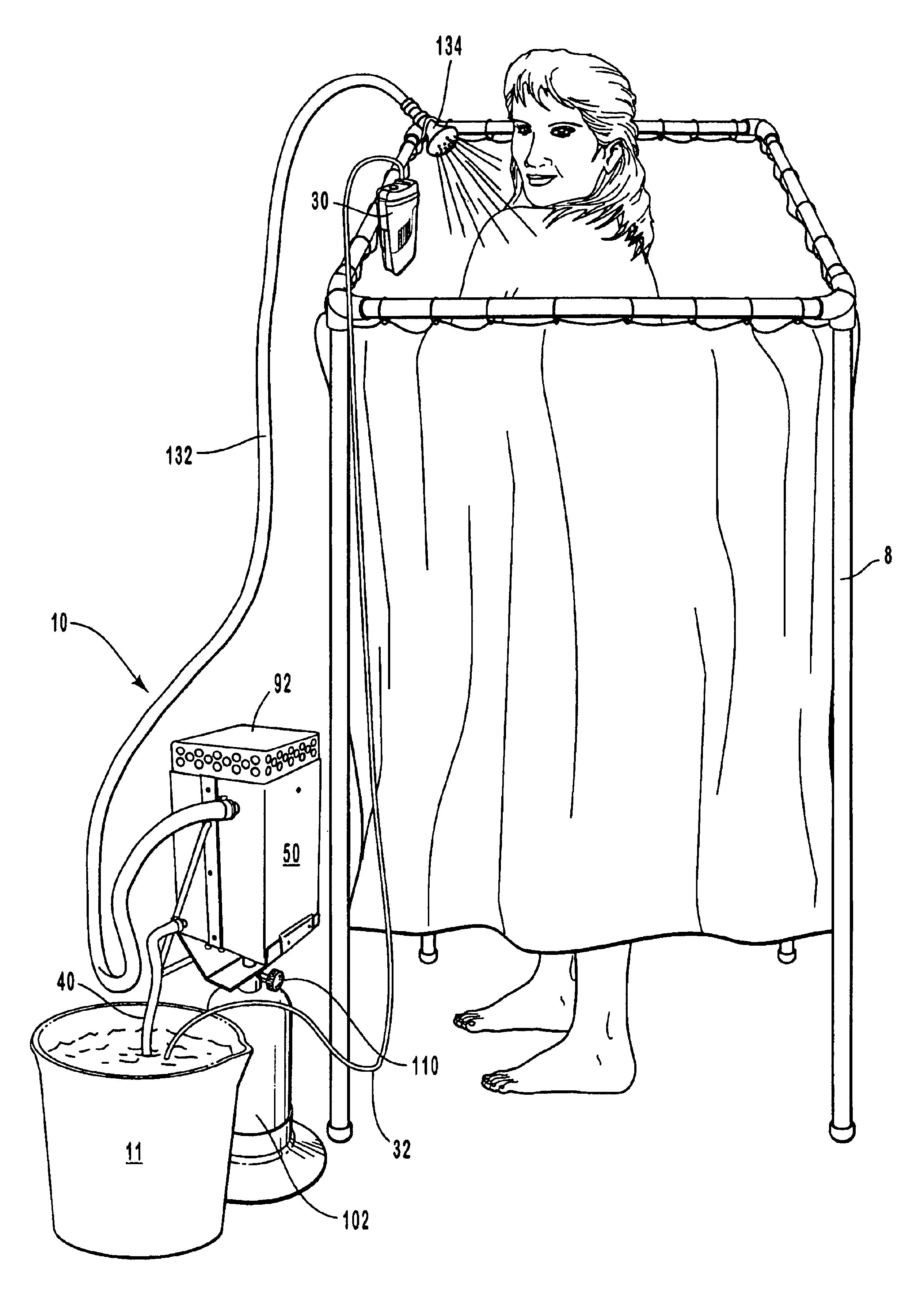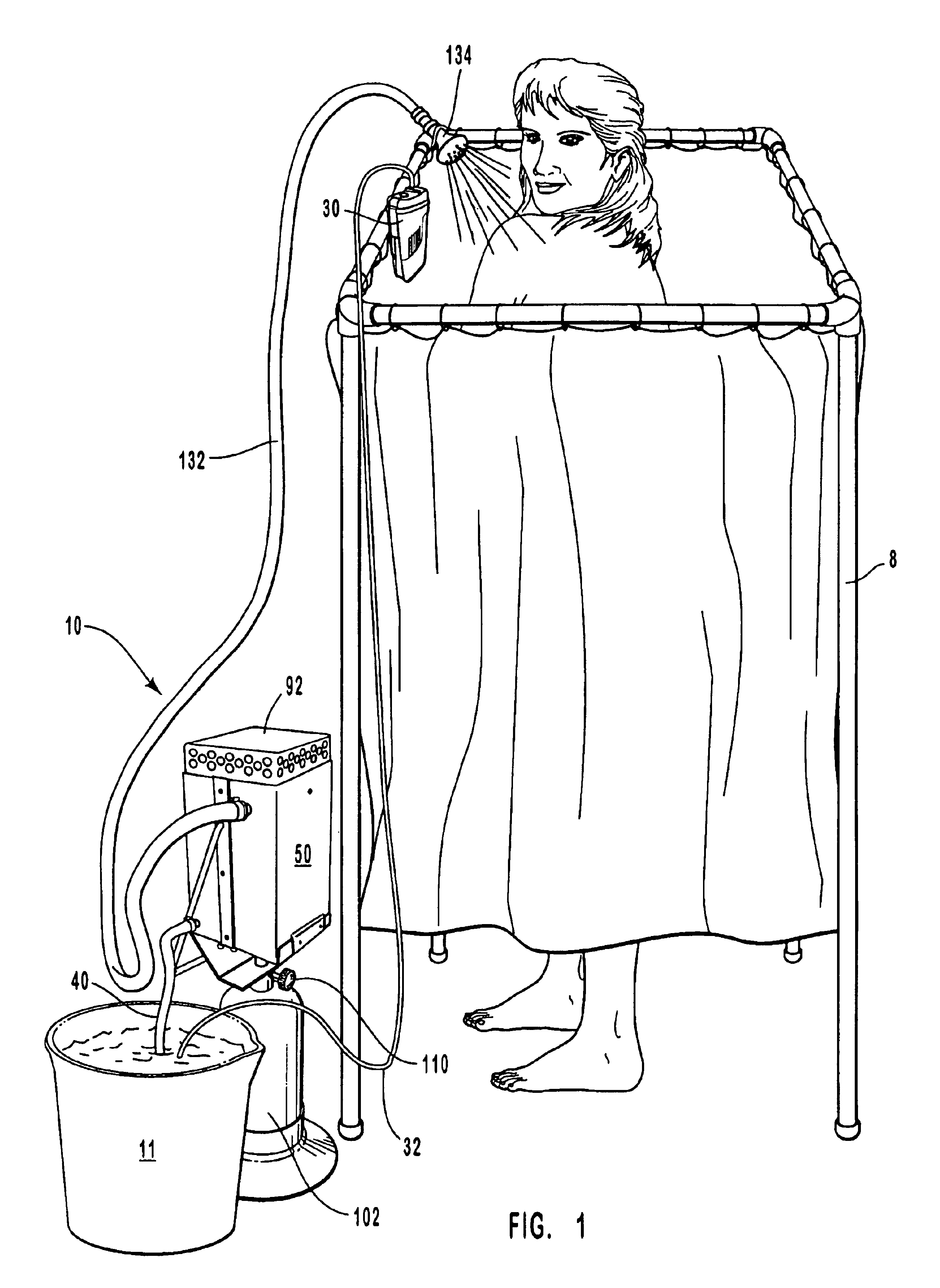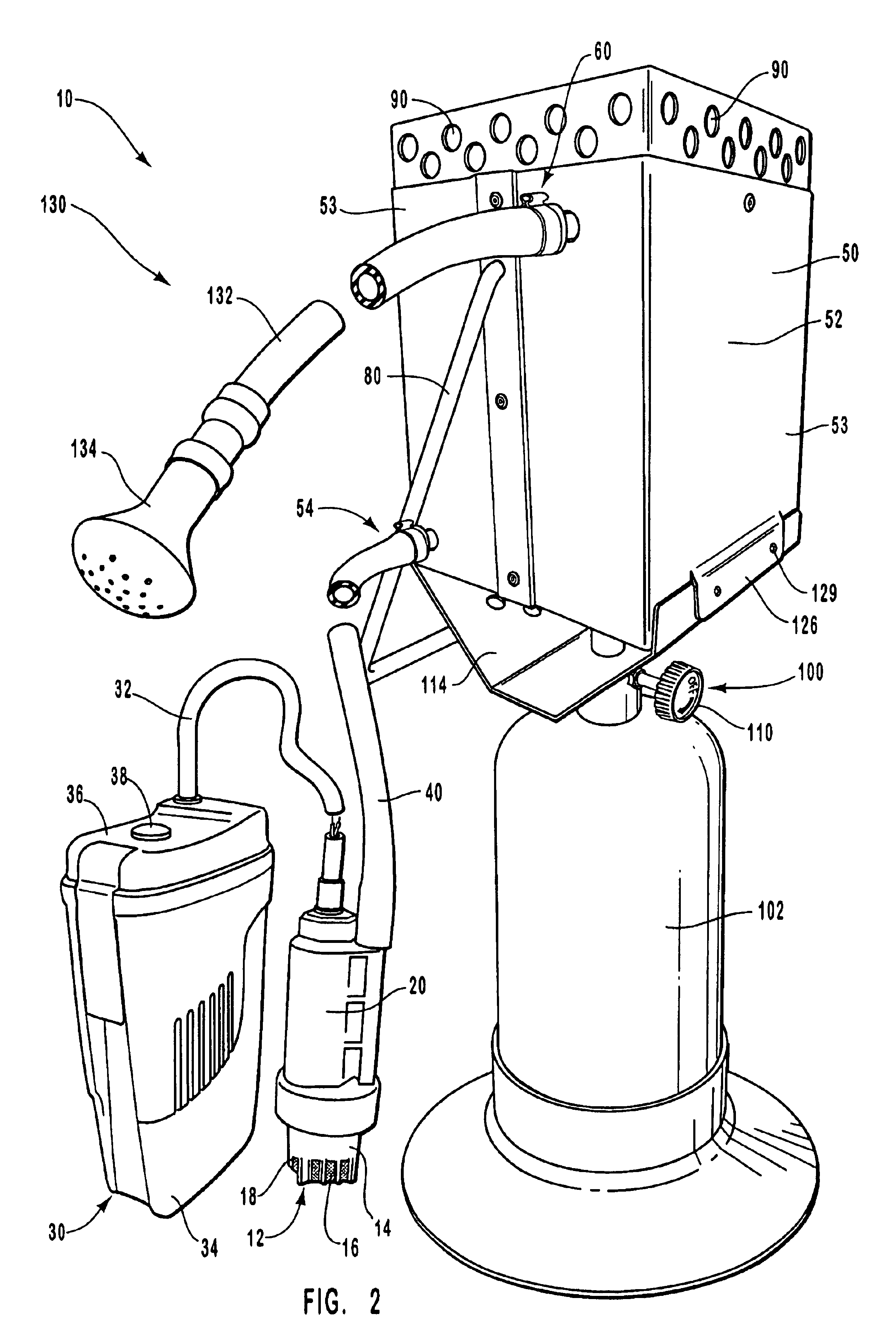Portable water heater
a water heater and portable technology, applied in the field of portable water heaters, can solve the problems of insufficient hot water in showers, insufficient power of small heat sources to provide the desired supply of hot water, and inability to provide water to showers, etc., to achieve convenient manufacturing and assembly, reduce manufacturing costs, and facilitate assembling and disassembly. advantages
- Summary
- Abstract
- Description
- Claims
- Application Information
AI Technical Summary
Benefits of technology
Problems solved by technology
Method used
Image
Examples
Embodiment Construction
[0035]The present invention involves a portable water heater that can be used to provide a hot shower in a variety of environments and locations. The principles of the present invention, however, are not limited to portable water heaters for hot showers. It will be understood that, in light of the present disclosure, the portable water heater can be successfully used in connection with other types of devices and uses, such as used for cooking and cleaning.
[0036]Additionally, to assist in the description of the portable water heater, words such as top, bottom, front, rear, right and left are used to describe the accompanying figures. It will be appreciated, however, that the portable water heater can be located in a variety of desired positions including various angles, slopes and inclines. A detailed description of the portable water heater now follows.
[0037]As seen in FIG. 1, a portable water heater 10 can be used to provide a hot shower to a user in a variety of locations. For exa...
PUM
 Login to View More
Login to View More Abstract
Description
Claims
Application Information
 Login to View More
Login to View More - R&D
- Intellectual Property
- Life Sciences
- Materials
- Tech Scout
- Unparalleled Data Quality
- Higher Quality Content
- 60% Fewer Hallucinations
Browse by: Latest US Patents, China's latest patents, Technical Efficacy Thesaurus, Application Domain, Technology Topic, Popular Technical Reports.
© 2025 PatSnap. All rights reserved.Legal|Privacy policy|Modern Slavery Act Transparency Statement|Sitemap|About US| Contact US: help@patsnap.com



